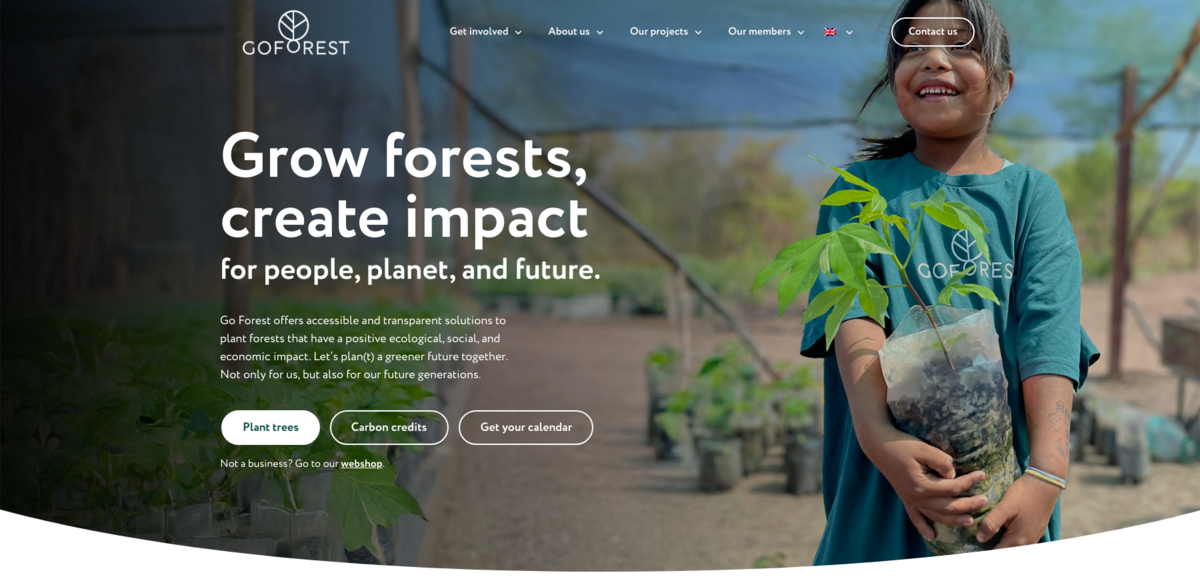What the Project Is
Discover the different systems used to make our Earth green again — a collection of initiatives focused on reforestation, agroforestry, mangroves, and dedicated projects in Tanzania, Argentina, Europe, and Madagascar. Reforestation is about restoring forests by planting trees in areas where forests have been depleted due to deforestation, natural disasters, or land degradation. Agroforestry is a land-use management system that integrates trees, crops, or livestock to create sustainable and productive landscapes. Mangrove restoration focuses on rebuilding degraded or destroyed mangrove forests in Madagascar to bring back their unique ecological and socio-economic benefits. Meanwhile, projects in Tanzania restore burned forests in the Magamba Nature Forest Reserve through local community efforts, and the Argentina project supports biodiversity recovery along with empowering indigenous communities. Across Europe, reforestation efforts span Belgium, Ireland, Portugal, Spain, Italy, France, Czech Republic, and the United Kingdom; all these projects work together with natural ecosystems that, in regions like Madagascar, have evolved over millions of years.
Main Benefit: Key Figures and Facts
- Reforestation covers Belgium, France, Germany, Italy, Spain, Portugal, U.K., Ireland, Brazil, the D.R. Congo, Tanzania, and Armenia.
- Agroforestry projects are active in Peru, Argentina, Madagascar, Tanzania, and the D.R. Congo.
- Mangrove restoration efforts focus specifically on Madagascar.
- The Tanzania project revitalizes the Magamba Nature Forest Reserve, involving local communities in planting, maintenance, and monitoring.
- The Argentina initiative addresses both biodiversity challenges and social issues, creating conditions for indigenous communities to thrive.
- European reforestation extends to sites in Belgium, Ireland, Portugal, Spain, Italy, France, the Czech Republic, and the United Kingdom, with opportunities for expansion in other European countries.
- Madagascar’s project highlights the island’s unique ecosystem, shaped over 160 million years since it separated from the African continent.
Different Topic: Global Restoration Initiatives
Across continents and cultures, these projects represent a unified commitment to greening the planet. This interconnected network of actions strives to restore not only the natural landscape but also the cultural bonds that tie local communities to their surroundings. Whether it’s planting trees in urban outskirts or reviving ancient forests, each initiative adds another chapter to the ongoing global restoration story — a process marked by care, persistence, and a shared love for nature.
Different Topic: Sustainable Land Management
Agroforestry emerges as a key player in sustainable land management, blending the boundaries between agriculture and forestry. By integrating trees with crops or livestock, agroforestry projects have redefined traditional land practices. This system encourages a harmonious balance between nature and agriculture, ensuring that ecological resilience is maintained while enhancing productivity. It is an approach that not only safeguards landscapes but also supports economic opportunities for communities involved — all while enjoying the benefits of a naturally restored environment.
Different Topic: Community and Cultural Impact
Local communities are at the heart of these restoration efforts. For instance, in Tanzania, the project focuses on restoring burned areas in the Magamba Nature Forest Reserve with the dedicated involvement of local residents. Similarly, the Argentina initiative goes beyond recovering biodiversity; it also pioneers social change by creating environments where indigenous communities can prosper. There is a real, tangible link between nature and culture here — a reminder that restoring the environment also means nurturing the traditions and futures of the people who call these regions home…
Project Impact: SDGs Linked
- SDG 13: Climate Action
- SDG 15: Life on Land
- SDG 2: Zero Hunger
- SDG 11: Sustainable Cities and Communities
- SDG 17: Partnerships for the Goals
Different Topic: A Future of Green Horizons
The outlook for these projects is as expansive as the forests they hope to restore. Embracing modern methods while staying true to the profound wisdom of natural ecosystems, the ambitions here hint at a future where green horizons are common rather than rare. In many ways, each tree planted, each forest revived, and each community engaged contributes to an evolving narrative of environmental recovery and human connection. It is a narrative that encourages curiosity, invites collaboration, and reminds everyone of nature’s inherent ability to flourish when given a helping hand — a future where every leaf tells a story, every forest speaks of renewal, and every project forges a stronger bond between humanity and the Earth.





















